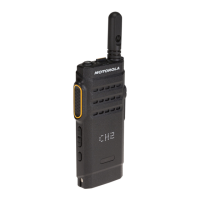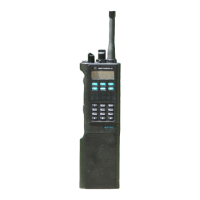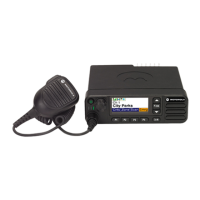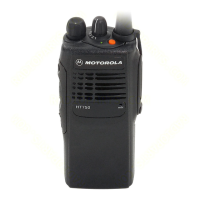The radio also supports supergroups of scanned groups, such that a group addressed DGNA
assignment received on one of the user scan group addresses causes the radio to monitor all signaling
addressed to that supergroup as long as the scan group is being monitored, and as long as the
supergroup lifetime lasts.
The following DGNA functions are not supported:
• Call-related DGNA.
• Functionality of the authorized user.
• Network authentication before accepting DGNA.
2.15.2
Ambience Listening
The Ambience Listening (AL) feature allows a console operator or dispatcher to monitor audio activity
near a specific radio without giving any indication to the affected radio.
When the radio receives a call setup message with an AL call, the radio accepts the call. Then the
radio opens the microphone, and begins transmitting without showing any indication of the call. Call
acceptance and rejection while active in another call follows the PPC rules.
The radio imposes no time limit on the transmission. The radio continues to transmit until the SwMI
ends the call or when you perform an action that releases the call. If you attempt to start a service
while the AL call is in progress, the radio disconnects the call and initiates the requested service. The
radio allows performing actions that can be performed without releasing the AL call. These actions
include access of most menu items, activating, deactivating scan lists, and changing talkgroups. When
changing talkgroups, the radio appears as if it is performing an attachment. The attachment appears to
be successful, but the actual attachment signaling is performed only after the AL call terminates. When
performing the attachment after the call, no indication is shown to the user unless the attachment fails.
If you attempt to power down the radio in the active AL call, the radio enters Pseudo Power-Off state.
2.15.3
Pseudo Power-Off
If you attempt to power down the radio in the active Ambience Listening (AL) call, the radio appears to
turn off. However, it remains fully operational from Layer-3 and below. The radio has a blank screen,
and all LEDs are turned off.
When the AL call ends in this pseudo power-off state, the radio automatically turns off.
If you attempt to power up the radio from the pseudo power-off state, the radio acts as if it is really
powering up.
2.15.4
Preemptive Priority Call
If during a call, a call setup is received for a call with higher priority than the present call, and the new
call priority is Preemptive Priority 3 (value 14 in the codeplug) or Preemptive Priority 4 – Emergency
(value 15 in the codeplug15), the radio disconnects from the present call and joins the new high priority
call.
If the call priority of the new call is Preemptive Priority 1 (12) or Preemptive Priority 2 (13), depending
on configuration, the radio either accepts or rejects the new call.
When the new call is accepted, a special tone is played, and you are notified of the high priority call.
When you initiate a private call and you receive a rejection with the reason Called party busy, you
have the option to interrupt the existing call or initiate a new call. However, this time the call is initiated
with the preemptive priority.
MN002955A01-AA
Chapter 2: Services and Features
46 Send Feedback
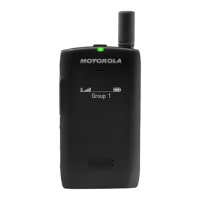
